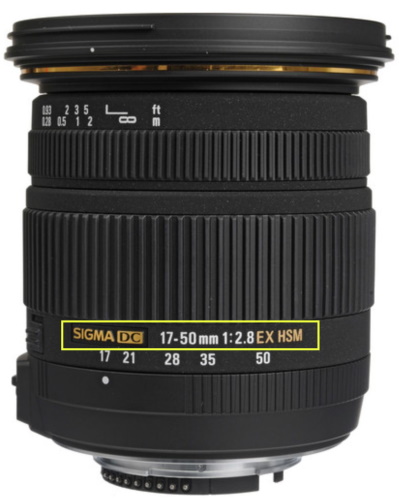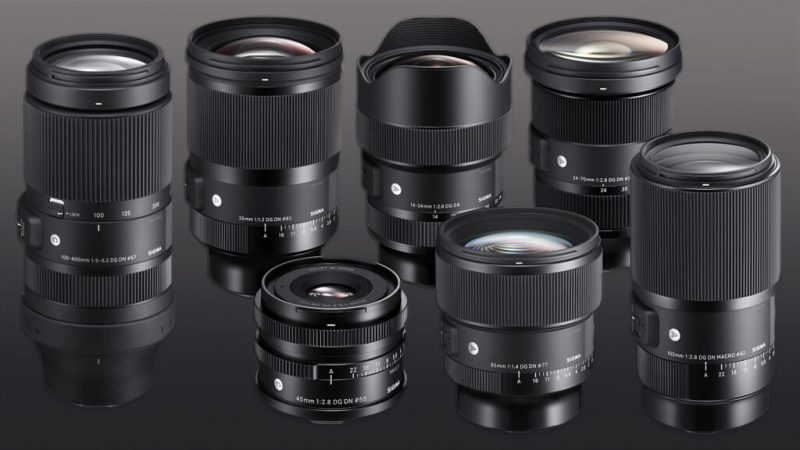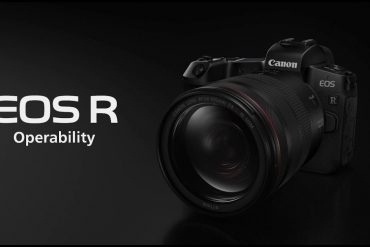In The camera lens market, you find two main categories the first and the third party lenses. First-party lenses are the ones made by the companies that manufacture the most popular camera brands. These include big names like Canon, Nikon, Sony, Olympus, and Pentax.
On the other hand, a third-party camera lens is one that has been developed by a different company than those who built your camera’s body. These include well-known names like Sigma, Tamron, ZEISS, Rokinon, Samyang, and Tokina.
Why use third-party lenses
One of the most common reasons is price, as third-party lenses tend to be more affordable than their first-party counterparts. a third-party lens may offer a specific focal length and aperture combination that’s not offered by the camera’s brand.
Additionally, a third-party lens could offer faster autofocus, a lighter or more portable build, or fewer image quality issues such as chromatic aberrations or focus breathing.
For example, one of our favorite third-party E-mount lenses is the Sigma 85mm F1.4 DG DN Art. When we compared it to the Sony 85mm F1.4 GM lens, we found it offered comparable performance capabilities, a smaller and lighter build, and a more affordable price tag.
What is Sony E-mount?
The Sony E-mount is a lens mount developed by Sony for use in cameras and camcorders. It is designed for both full-frame E-mount mirrorless digital cameras and APS-C-sized E-mount cameras. For more information about Sony E mount, check my post “Sony Digital Camera Lenses- The Best Picks”
Sigma lenses product lines
SIGMA is organizing all its interchangeable lenses into three product lines. Each line has its own clearly defined concept.
-
Art line
These lenses reach the high standards demanded by photographers with an artistic, creative inclination. The Sigma Art line is intended to help photographers come up with the best photos. This is why these lenses offer the best optical performance, and advanced technology, not to mention dust-and-splash resistant construction.
The Art line includes a wide range of lenses. It has prime and zoom lenses. And it also features wide-angle and standard view lenses.
-
Sport line
Sports line lenses provide an amazing long telephoto capability, along with super-tough build quality that holds up to the most extreme conditions. The Sport is reportedly sharper, has faster autofocus, is more ruggedly built, and boasts better weather sealing. The Sports lens line is aimed at the “pro” market.
-
Contemporary line
The Contemporary lenses are compact, high-quality, and affordable, to meet the needs of a wide audience of creators who simply want great images and product quality that doesn’t break the bank.
Simply, a Contemporary lens has the advantage of being smaller, lighter, and more affordable, and chances are it’ll be all the lens you need for almost any situation.
Sigma lens abbreviations
Lens abbreviations save you the trouble of going through lens or camera manuals to find out what you can achieve from each scene. The table below lists the abbreviation system used by Sigma for its lenses, what these abbreviations stand for and how they can work for you.
| Abb. | Meaning | Effect |
|---|---|---|
| A | Art | Art lens product line |
| APO | Apochromatic | Reduce chromatic aberration and other lens aberrations |
| ASP | Aspherical | Reduce aspherical aberrations. |
| C | Contemporary | Contemporary lens product line |
| CONV | Teleconverter compatible | can be used with Sigma APO Teleconverters |
| DC | Designed for APS-C | |
| DG | Designed for full-frame | |
| DN | Designed for mirrorless cameras | |
| ELD | Extraordinary Low Dispersion | Reduse chromatic aberrations |
| EX | Professional Prime Lens | maintain max f-stop regardless of zoom |
| FLD | Fluorite, Low Dispersion | Reduce chromatic aberrations |
| HSM | Hyper Sonic Motor | Silent and fast autofocusing |
| IF | Internal Focusing | Adjust focus without changing the length of the lens barrel |
| OS | Optical Image Stabilisation | Reduce camera shake with handheld shots |
| RF | Rear Focusing | Focus using rear elements, making them faster and quieter than front-focusing |
| S | Sport | Sport Lens product line |
| SLD | Special Low Dispersion | Reduce chromatic aberrations |

Example of Sigma Lens Abbreviation: Sigma 17-50mm 1:2.8 EX DC OS HSM FLD
The lens abbreviations tell us the following:
- It is a zoom lens with a focal length range: of 17mm to 50mm
- It has a maximum aperture of f/2.8
- It’s of a professional standard (EX)
- It is designed for a crop sensor (APS-C) camera (DC)
- It has optical image stabilization (OS)
- The lens has a hypersonic motor (HSM)
- It employs a fluorite low dispersion lens element (FLD)
Sigma Lenses for Sony E Mount
The below list shows our recommended Sigma lenses for both full-frame and crop sensor Sony mirrorless cameras with E mount.
- Sigma DC DN Contemporary 16mm f/1.4
- Sigma DC DN Contemporary 30mm f/1.4
- Sigma DC DN Contemporary 18-50mm f/2.8
- Sigma DC DN Contemporary 56mm f/1.4
- Sigma DG DN Art 14-24mm f/2.8
- Sigma DG DN Contemporary 24mm f/2
- Sigma DG DN Art 35mm f/1.4
- Sigma DG DN Art 24-70mm f/2.8
- Sigma DG DN Art 85mm f/1.4
- Sigma DG DN Art 105mm f/2.8 macro
- Sigma DG DN OS Sports 150-600mm f/5-6.3
1- Sigma DC DN Contemporary 16mm f/1.4

APS-C Contemporary
Mixing a comfortable wide-angle design with an ultra-fast maximum aperture, the 16mm f/1.4 DC DN is part of Sigma’s Contemporary series of lenses and is designed for use with APS-C-format Sony E-mount mirrorless cameras.
Characterized by its bright f/1.4 maximum aperture, this lens is adept at working in low-light conditions and affords increased control over the depth of field for selective focus control.
Specifications
| Focal Length | 16mm (35mm Equivalent Focal Length: 24mm) |
|---|---|
| Maximum Aperture | f/1.4 |
| Minimum Aperture | f/16 |
| Lens Mount | Sony E |
| Lens Format Coverage | APS-C |
| Angle of View | 83.2° |
| Minimum Focus Distance | 9.8" / 25 cm |
| Maximum Magnification | 0.1x |
| Optical Design | 16 Elements in 13 Groups |
| Diaphragm Blades | 9, Rounded |
| Focus Type | Autofocus |
| Image Stabilization | No |
| Filter Size | 67 mm (Front) |
| Dimensions (ø x L) | 2.84 x 3.63" / 72.2 x 92.3 mm |
| Weight | 14.29 oz / 405 g |
Pros & Cons
| Pros | Cons |
|---|---|
| Well-built. | Lack of image stabilization |
| Compact and light | |
| Fast and accurate autofocus. | |
| Superb image quality. |
2- Sigma DC DN Contemporary 30mm f/1.4

APS-C Contemporary
A fast, versatile prime, this 30mm f/1.4 DC DN Contemporary Lens from Sigma is designed for use with APS-C-format Sony E-mount mirrorless cameras. The bright f/1.4 maximum aperture benefits working in low-light conditions and affords extensive control over the depth of field for using selective focus techniques.
Additionally, benefitting both stills shooting and video recording, this compact prime also incorporates a stepping AF motor for smooth, near-silent autofocus performance.
Specifications
| Focal Length | 30mm (35mm Equivalent Focal Length: 45mm) |
|---|---|
| Maximum Aperture | f/1.4 |
| Minimum Aperture | f/16 |
| Lens Mount | Sony E |
| Lens Format Coverage | APS-C |
| Angle of View | 50.7° |
| Minimum Focus Distance | 11.81" / 30 cm |
| Maximum Magnification | 0.14x |
| Optical Design | 9 Elements in 7 Groups |
| Diaphragm Blades | 9, Rounded |
| Focus Type | Autofocus |
| Image Stabilization | No |
| Filter Size | 52 mm (Front) |
| Dimensions (ø x L) | 2.55 x 2.89" / 64.8 x 73.3 mm |
| Weight | 9.35 oz / 265 g |
Pros & Cons
| Pros | Cons |
|---|---|
| Great color | More purple fringing than expected for a Sigma lens |
| Pretty sharp | |
| Fast and accurate focusing in good light | |
| Lightweight |
3- Sigma DC DN Contemporary 18-50mm f/2.8

APS-C Contemporary
Ideal for a wide range of photo and video applications including landscapes, portraits, street photography, architecture, and events, the 18-50mm f/2.8 DC DN Contemporary Lens from Sigma is a small, light, and bright standard zoom for crop-sensor mirrorless cameras. Offered here with a Sony E-mount, this lens provides a versatile full-frame equivalent zoom range of 27-75mm and a wide constant aperture of f/2.8 throughout the entire zoom range.
Autofocus is exceptionally fast and quiet thanks to the lens’s stepping motor, which can be particularly useful when shooting video or fast-moving subjects such as children and animals.
An ultimate workhorse, the lens features a minimum focusing distance of just 4.8″, enabling it to be used for macro-style close-up photography, and the lens is also outfitted with a rounded seven-blade diaphragm for a pleasing bokeh quality.
Specifications
| Focal Length | 18 to 50mm (35mm Equivalent Focal Length: 27 to 75mm) |
|---|---|
| Maximum Aperture | f/2.8 |
| Minimum Aperture | f/22 |
| Lens Mount | Sony E |
| Lens Format Coverage | APS-C |
| Angle of View | 76.5° to 31.7° |
| Minimum Focus Distance | 4.8" / 12.1 cm |
| Maximum Magnification | 0.36x |
| Macro Reproduction Ratio | 1970-01-01 00:01:03 |
| Optical Design | 13 Elements in 10 Groups |
| Diaphragm Blades | 7, Rounded |
| Focus Type | Autofocus |
| Image Stabilization | No |
| Filter Size | 55 mm (Front) |
| Dimensions (ø x L) | 2.5 x 2.9" / 64.5 x 74.5 mm |
| Weight | 10.2 oz / 290 g |
Pros & Cons
| Pros | Cons |
|---|---|
| Constant f/2.8 aperture | No optical stabilizer |
| Small and lightweight | Controls are basic |
| Impressive image quality |
4- Sigma DC DN Contemporary 56mm f/1.4

APS-C Contemporary
An especially sleek portrait-length prime, the 56mm f/1.4 DC DN is part of Sigma’s Contemporary series of lenses and is designed for use with APS-C-format Sony E-mount mirrorless cameras. The lens is characterized by its bright f/1.4 maximum aperture, which suits working in difficult lighting conditions and also offers improved control over depth of field for isolating subjects and working with selective focus techniques.
A super multilayer coating has also been applied to suppress flare and ghosting in order to achieve more contrast and color accuracy when working in strong lighting conditions.
Specifications
| Focal Length | 56mm (35mm Equivalent Focal Length: 84mm) |
|---|---|
| Maximum Aperture | f/1.4 |
| Minimum Aperture | f/16 |
| Lens Mount | Sony E |
| Lens Format Coverage | APS-C |
| Angle of View | 28.5° |
| Minimum Focus Distance | 1.64' / 50 cm |
| Maximum Magnification | 0.14x |
| Optical Design | 10 Elements in 6 Groups |
| Diaphragm Blades | 9, Rounded |
| Focus Type | Autofocus |
| Image Stabilization | No |
| Filter Size | 55 mm (Front) |
| Dimensions (ø x L) | 2.62 x 2.34" / 66.5 x 59.5 mm |
| Weight | 9.88 oz / 280 g |
Pros & Cons
| Pros | Cons |
|---|---|
| High image quality | No image stabilization |
| Bright | Different focal point on MFT |
| Nice background blur | |
| Well built | |
| Nice and compact | |
| Light |
5- Sigma DG DN Art 14-24mm f/2.8

Full frame Art
Created for full-frame Sony E-mount mirrorless cameras, the Sigma 14-24mm f/2.8 DG DN Art Lens provides a versatile range of wide-angle focal lengths with excellent image quality while optimizing size and weight.
As an Art-series zoom, it is a fast f/2.8 constant maximum aperture to suit working in available lighting conditions also distinguishes this lens
Though the full-time manual focus is available, this lens is equipped with a stepping motor that enables smooth, high-speed autofocusing that is notably quiet whether utilizing features such as Face/Eye Detection AF or during video shooting.
A built-in Autofocus-Lock (AFL) button can be assigned additional functions to widen the range of operations available on the lens, while inside, a rounded 11-blade diaphragm improves image quality by helping to create smooth bokeh. Additionally, a built-in lens hood serves to protect the front element as well as prevent stray light from causing flare.
Specifications
| Focal Length | 14 to 24mm |
|---|---|
| Maximum Aperture | f/2.8 |
| Minimum Aperture | f/22 |
| Lens Mount | Sony E |
| Lens Format Coverage | Full-Frame |
| Angle of View | 114.2° to 84.1° |
| Minimum Focus Distance | 11" / 27.94 cm |
| Maximum Magnification | 0.14x |
| Macro Reproduction Ratio | 1970-01-01 00:01:07 |
| Optical Design | 18 Elements in 13 Groups |
| Diaphragm Blades | 11, Rounded |
| Focus Type | Autofocus |
| Image Stabilization | No |
| Filter Size | Gel Filter (Rear) |
| Dimensions (ø x L) | 3.35 x 5.16" / 85 x 131 mm |
| Length at Maximum Extension | 5.23" / 132.8 mm |
| Weight | 28.04 oz / 795 g |
Pros & Cons
| PROS | CONS |
|---|---|
| Ultra-wide angle of view. | Resolution drops slightly at 24mm. |
| Strong optical performance, even at f/2.8. | Some visible distortion. |
| All-weather build. | |
| Fluorine protection. | |
| Rear filter support. | |
| Native design for Sony and L-mount mirrorless systems. |
6- Sigma DG DN Contemporary 24mm f/2

Full frame Contemporary
A compact wide-angle prime, the Sony E-mount 24mm f/2 DG DN Contemporary Lens from Sigma provides excellent edge-to-edge sharpness in a stylish all-metal design.
An ideal lens for landscape, nature, interior, and architectural photography, the lens provides a modestly bright f/2 maximum aperture for low-light performance and shallow depth of field control.
Additionally, its fast maximum aperture makes it a natural choice for the night sky and astrophotography. In regard to focus, this lens features a stepping motor for quick and quiet AF performance that suits both photo and video applications.
Specifications
| Focal Length | 24 mm |
|---|---|
| Maximum Aperture | f/2 |
| Minimum Aperture | f/22 |
| Lens Mount | Sony E |
| Lens Format Coverage | Full-Frame |
| Minimum focusing distance | 9.65" |
| Angle of View | 84.1° |
| Focus Type | Autofocus |
| Image Stabilization | No |
| Filter Thread | 62 mm |
| Weight | 12.9 oz |
Pros & Cons
| Pros: | Cons: |
|---|---|
| Beautiful, feature rich construction | Distortion a little high |
| Includes some weather sealing | Much lower magnification figure than F3.5 version |
| Fast, quiet autofocus | |
| Smooth and quiet video AF work | |
| Good flare resistance | |
| CA is well controlled | |
| Fairly good coma performance | |
| Excellent sharpness and contrast across the frame even wide open | |
| Compact size | |
| Reasonable price |
7- Sigma DG DN Art 35mm f/1.4

Full frame Art
A classic wide-angle lens updated for full-frame Sony E-mount mirrorless systems, the 35mm f/1.4 DG DN from Sigma is an Art-series prime characterized by its advanced and updated optical design, sleek profile, and bright design.
The f/1.4 maximum aperture enables working in low-light conditions and also provides increased control over the depth of field for achieving shallow depth-of-field effects.
The optical layout incorporates two SLD Special-Low Dispersions, one ELD Extra-Low Dispersion, and one FLD Low Dispersion element. In addition, a Super Multi-Layer Coating enhances image quality by suppressing lens flare and ghosting for improved contrast and color fidelity in strong lighting conditions.
It features a physical aperture ring, which can be de-clicked or locked, along with a dedicated focus mode switch and AFL button for intuitive and tactile control.
For autofocus, a stepping motor is used that maintains a lightweight and compact design while promoting fast and near-silent focusing performance for both stills and video applications. Additionally, the lens features an 11-blade rounded diaphragm for smooth bokeh quality and the lens housing is also weather-sealed to suit working in inclement conditions.
Specifications
| Focal Length | 35mm |
|---|---|
| Maximum Aperture | f/1.4 |
| Minimum Aperture | f/16 |
| Lens Mount | Sony E |
| Lens Format Coverage | Full-Frame |
| Angle of View | 63.4° |
| Minimum Focus Distance | 11.8" / 30 cm |
| Macro Reproduction Ratio | 1970-01-01 00:01:05 |
| Optical Design | 15 Elements in 11 Groups |
| Diaphragm Blades | 11, Rounded |
| Focus Type | Autofocus |
| Image Stabilization | No |
| Filter Size | 67 mm (Front) |
| Dimensions (ø x L) | 3 x 4.4" / 75.5 x 111.5 mm |
| Weight | 22.6 oz / 640 g |
Pros & Cons
| Pros: | Cons: |
|---|---|
| Good build quality complete with weather sealing | Larger and heavier than GM lens |
| Strikes a good balance of size relative to performance | |
| As feature rich as the GM series | |
| Fast, quiet, accurate autofocus | |
| Incredibly sharp across the frame | |
| Nice bokeh | |
| Good resistance to flare | |
| Aberrations well controlled | |
| Awesome price point |
8- Sigma DG DN Art 24-70mm f/2.8

Full frame Art
As part of the Art line, this lens is designed to achieve truly notable optical performance and is ideally suited for creative and artistic applications. It features a constant f/2.8 maximum aperture that is well-suited for working in available light conditions and provides greater control over depth of field when using shallow depth of field techniques.
The integrated stepping motor realizes quick and quiet autofocus, further complemented by an optimized AF algorithm to produce smoother focusing performance.
Specifications
| Focal Length | 24 to 70mm |
|---|---|
| Maximum Aperture | f/2.8 |
| Minimum Aperture | f/22 |
| Lens Mount | Sony E |
| Lens Format Coverage | Full-Frame |
| Angle of View | 84.1° to 34.3° |
| Minimum Focus Distance | 7.09" / 18 cm |
| Maximum Magnification | 0.34x |
| Optical Design | 19 Elements in 15 Groups |
| Diaphragm Blades | 11, Rounded |
| Focus Type | Autofocus |
| Image Stabilization | No |
| Filter Size | 82 mm (Front) |
| Dimensions (ø x L) | 3.46 x 4.84" / 87.8 x 122.9 mm |
| Length at Maximum Extension | 6.2" / 157.5 mm |
| Weight | 1.84 lb / 835 g |
Pros & Cons
| Pros: | Cons: |
|---|---|
| Pro-grade build competes with Sony GM | Pronounced barrel distortion at 24mm |
| Weather sealing throughout lens | Poor flare resistance |
| Fast, quiet, and accurate autofocus | Fairly large and heavy |
| Eye AF works well | Focus quality isn’t as good at very close focus distances |
| Good image sharpness across the focal range and image frame | |
| Good color and contrast | |
| Fairly good coma performance | |
| Good bokeh for a standard zoom | |
| Excellent price-to-performance ratio |
9- Sigma DG DN Art 85mm f/1.4

Full frame Art
A classic portrait-length lens updated for full-frame Sony E-mount mirrorless systems, the Sigma 85mm f/1.4 DG DN is an Art-series prime characterized by its advanced and updated optical design, sleek profile, and bright design.
The f/1.4 maximum aperture enables working in low-light conditions and also provides increased control over depth of field for achieving shallow depth of field effects.
The optical layout incorporates a series of low dispersion, aspherical, and high refractive index elements and its large diameter design achieves a notable degree of clarity and sharpness with well-controlled distortion and aberrations.
Balancing the optics is a refined exterior design, which features a physical aperture ring, which can be de-clicked or locked, along with a dedicated focus mode switch and AFL button for intuitive and tactile control.
For autofocus, a stepping motor is used that maintains a lightweight and compact design while promoting fast and near-silent focusing performance for both stills and video applications. Additionally, the lens features an 11-blade rounded diaphragm for smooth bokeh quality and the lens housing is also weather-sealed to suit working in inclement conditions.
Specifications
| Focal Length | 85mm |
|---|---|
| Maximum Aperture | f/1.4 |
| Minimum Aperture | f/16 |
| Lens Mount | Sony E |
| Lens Format Coverage | Full-Frame |
| Angle of View | 28.6° |
| Minimum Focus Distance | 2.79' / 85 cm |
| Maximum Magnification | 0.12x |
| Optical Design | 15 Elements in 11 Groups |
| Diaphragm Blades | 11, Rounded |
| Focus Type | Autofocus |
| Image Stabilization | No |
| Filter Size | 77 mm (Front) |
| Dimensions (ø x L) | 3.26 x 3.78" / 82.8 x 96.1 mm |
| Weight | 1.38 lb / 625 g |
Pros & Cons
| PROS | CONS |
|---|---|
| Weather-resistant construction | Significant pincushion distortion |
| Great image quality overall | Lacks optical image stabilization |
| Beautiful bokeh | |
| Accurate and precise autofocus | |
| Competitively priced alternative to the Sony 85mm f1.4 G Master | |
| Much more compact than the Sigma 85mm f1.4 DG HSM Art |
10- Sigma DG DN Art 105mm f/2.8 macro

Full frame Art
The Sony E-mount 105mm f/2.8 DG DN Macro Art Lens, from Sigma, is a short-telephoto prime optimized for macro use. With a minimum focusing distance of 11.6″, and a 5.5″ working distance, this lens offers a life-size, 1:1 reproduction ratio for accurate rendering of close-up subjects.
Its optical design incorporates one SLD element, which also helps to realize high clarity and color accuracy by suppressing various aberrations and color fringing. A Super Multi-Layer Coating has also been applied, which controls flare and ghosting for greater contrast.
This lens sports a Hyper-Sonic Motor for quick and quiet AF performance and intuitive full-time manual focus control. A focus limiter switch also helps to boost focusing speed and precision, and there is also a customizable AFL button and dedicated focus mode switch.
Additionally, the lens features a nine-blade rounded diaphragm for smooth bokeh quality and the lens housing is also weather-sealed to suit working in inclement conditions.
Specifications
| Focal Length | 105mm |
|---|---|
| Maximum Aperture | f/2.8 |
| Minimum Aperture | f/22 |
| Lens Mount | Sony E |
| Lens Format Coverage | Full-Frame |
| Angle of View | 23.3° |
| Minimum Focus Distance | 11.6" / 29.5 cm |
| Maximum Magnification | 1x |
| Macro Reproduction Ratio | 1970-01-01 01:01:00 |
| Optical Design | 12 Elements in 7 Groups |
| Diaphragm Blades | 9, Rounded |
| Focus Type | Autofocus |
| Image Stabilization | No |
| Filter Size | 62 mm (Front) |
| Dimensions (ø x L) | 2.9 x 5.3" / 74 x 135.6 mm |
| Length at Maximum Extension | 5.35" / 135.9 mm |
| Weight | 1.6 lb / 710 g |
Pros & Cons
| Pros | Cons |
|---|---|
| Excellent build quality | Some will miss having stabilization in the lens |
| Feature rich – equal to GM series | Manual focus isn’t as precise as on the Sony 90G Macro |
| Amazing sharpness across the frame | Autofocus motor isn’t as quiet or refined as the best |
| Great contrast | |
| Almost no aberrations | |
| Great color rendition | |
| Quality, soft bokeh | |
| Good price to performance ratio |
11- Sigma DG DN OS Sports 150-600mm f/5-6.3

Full frame Sports
Ideal for wildlife, sports, landscapes, motorsports, and countless other photographic endeavors, the Sony E-mount 150-600mm f/5-6.3 DG DN OS Sports Lens from Sigma offers the features and image quality that professionals demand.
This lens provides high rendering throughout the entire zoom range at all apertures, and ghosting, flare, and various types of aberrations are all well-controlled.
An updated and redesigned autofocus system offers both speed and precision by incorporating an AF actuator driven by a stepping motor, as well as a high-precision magnetic sensor.
Optical image stabilization delivers approximately four stops of compensation, with two standard OS modes for both handheld shooting and panning situations.
A new Zoom Torque switch gives users the option to adjust the level of zoom ring resistance from Lock (locked at the wide end for transport), Tight (prevents zoom creep), and Smooth (for easy, smooth zooming).
Additional on-lens controls include a Focus Limiter switch, OS Mode switch, a Custom switch for custom OS settings, and three customizable AFL buttons.
Specifications
| Focal Length | 150 to 600mm |
|---|---|
| Maximum Aperture | f/5 to 6.3 |
| Minimum Aperture | f/22 to 29 |
| Lens Mount | Sony E |
| Lens Format Coverage | Full-Frame |
| Angle of View | 16.4° to 4.1° |
| Minimum Focus Distance | 22.8" / 58 cm |
| Maximum Magnification | 0.34x |
| Macro Reproduction Ratio | 1970-01-01 00:01:03 |
| Optical Design | 25 Elements in 15 Groups |
| Diaphragm Blades | 9, Rounded |
| Focus Type | Autofocus |
| Image Stabilization | Yes |
| Tripod Collar | Removable |
| Filter Size | 95 mm (Front) |
| Dimensions (ø x L) | 4.3 x 10.5" / 10.9 x 26.7 cm |
| Weight | 74.1 oz / 2.1 kg |
Pros & Cons
| PROS | CONS |
|---|---|
| Sharp results across zoom range | Small f-stop isn't great for low light |
| Dust, splash, and fluorine protection | Limits Sony a1 and a9 continuous drive speed |
| Two zoom tension settings | |
| Outstanding stabilization |
Related Posts
Sony Digital Camera Lenses- The Best Picks
Best Sigma Lenses For Canon – Go For Third Party
Thanks for reading, I hope you enjoyed the article, in case you have any questions just drop them below & I will be happy to answer you.
If you enjoy the site, don’t forget to subscribe, we will only inform you when a new article is posted.










Thank you very much for this valuable detailed post about Sigma Lens For Sony E Mount. Actually I have little knowledge about photography. I also think sony e mount is very good. But more expensive. Looking at that, I think sigm lens is a very good choice. Keep posting like this. I definitely share this.
Thanks
I love my Sony camera. They are an excellent brand with good quality pictures and videos. I have to agree that sometimes when it comes to buying extra lenses, it’s cheaper and more affordable to go with a new brand, as the affordable brands can sometimes be better than the name brands like Sony. Going to share your review with my social media followers.
Thanks for the comment